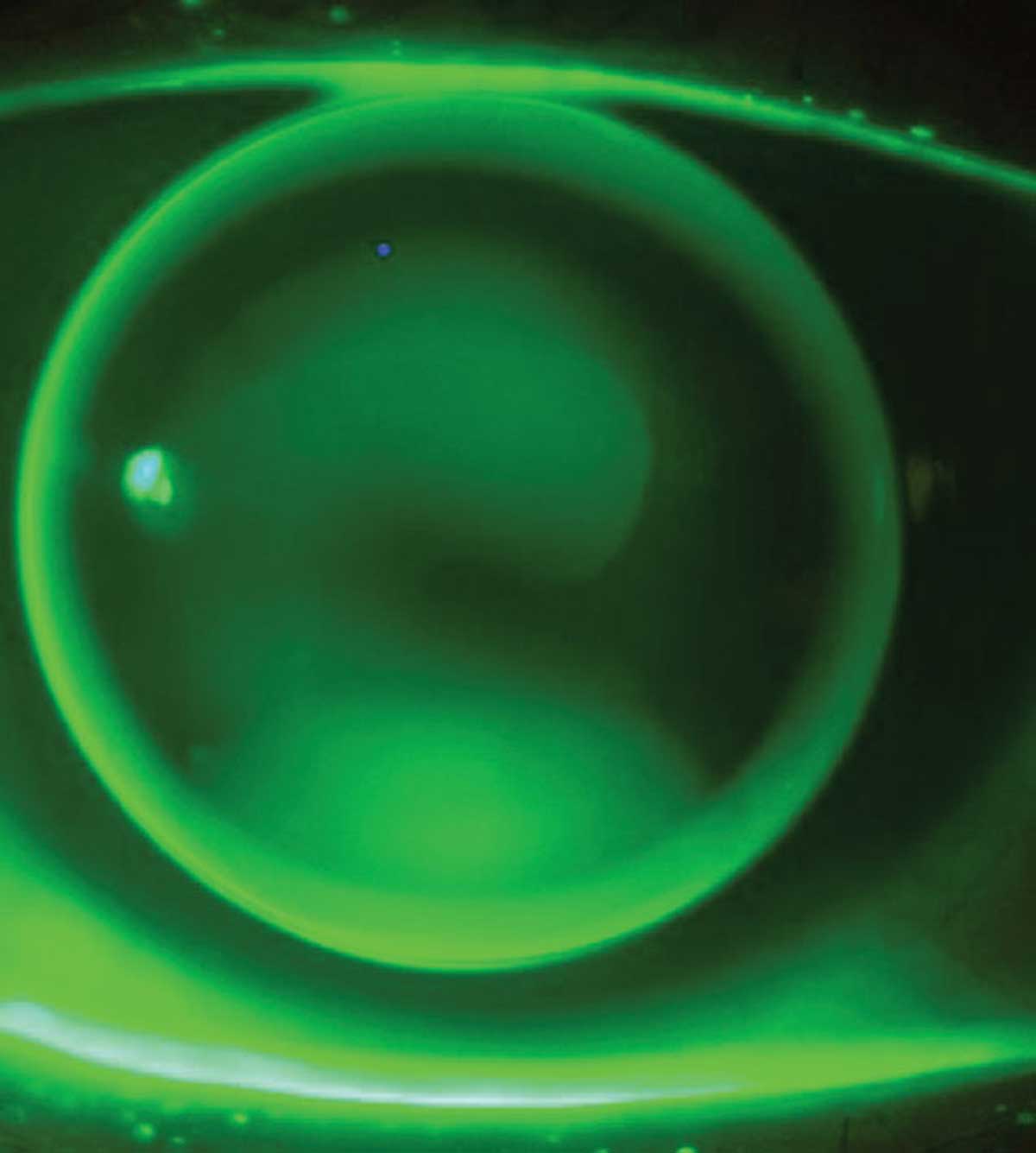 |
Corneal GP lenses remain the top choice in keratoconus management. Photo: Tiffany Andrzejewski, OD, and John Gelles, OD. Click image to enlarge. |
Although corneal gas permeable (GP) lenses have been the treatment of choice for visual correction in keratoconus patients for more than half a century, scleral lenses have become an increasingly popular choice in recent years. Tracking prescription trends between the two options, a new study found that while scleral lens prescriptions increased over the last decade, more doctors prescribed corneal GP lenses for their keratoconus patients.
Researchers analyzed the records of 292 patients diagnosed with keratoconus who were evaluated by the Contact Lens Service at the University of Illinois at Chicago Eye and Ear Infirmary. The analysis was conducted in 2010, 2017 and 2020.
From 2010 to 2020, GP wear was still the most popular, but it decreased by 9% over the decade, while scleral prescriptions went from zero to nearly one-fourth of the lenses fit over the same period.
In 2010, 69% of patients wore corneal GP lenses, 16% soft torics, 13% hybrid and 2% soft sphere with no scleral lens.
In 2020, 60% of participants wore corneal GP lenses, 22% scleral lenses, 12% soft torics, 5% hybrid and 1% soft sphere.
In this cohort, scleral lens wearers had the steepest mean keratometry readings compared with patients who were prescribed other lens types, yet these individuals maintained a mean VA of 20/30 or better.
This improvement in VA is consistent with a larger percentage of patients in corneal GP, sclerals and hybrid lenses in the 2020 group compared with 2010, the authors said. However, best-corrected VA improved for soft toric, hybrid and GP modalities, and so overall improvement in VA couldn’t be solely attributed to sclerals, the researchers suggested.
“It is notable that there was better VA achieved despite an increase in mean keratometry and increase in percentage of patients classified as stage IV keratoconus,” the authors wrote in their paper.
With contact lenses, the minimum angles of resolution VA with manifest refraction were 0.42 in 2010 and 0.35 in 2020, for an improvement of 0.19 and 0.13, respectively.
Keratometry measurement in scleral-wearing patients was 53D, which was steeper than the 46.6D in patients wearing all other lens types in 2010 and 2020.
Despite being prescribed for patients with the most advanced disease, sclerals provided good VA, the authors noted. Scleral lens fittings should be considered for patients before considering corneal transplantation, they added.
Scanzera AG, Deeley M, Joslin C, et al. Contact lens prescribing trends for keratoconus at an academic medical center—increased utilization of scleral lenses for severe disease. Eye Contact Lens. 2022;48(2):58-62. |

